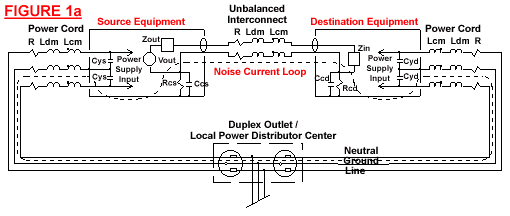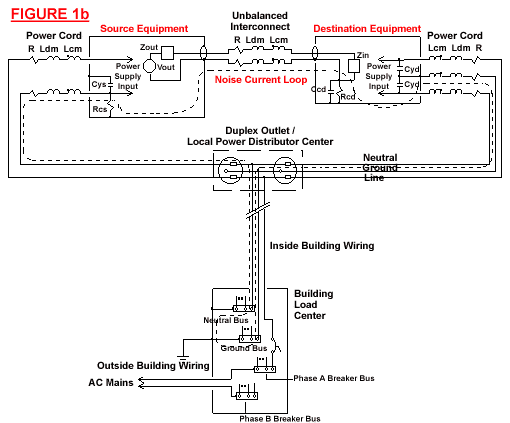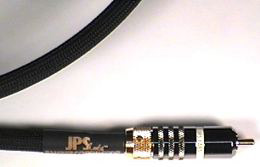Han prøvde nok å stille et spørsmål til forumet. På den måten kan man utvikle seg fra hjelpetrengende amatør til industriledende ekspert på bare noen uker.Hva prøver du å si med dette innlegget?
Sist redigert:
Han prøvde nok å stille et spørsmål til forumet. På den måten kan man utvikle seg fra hjelpetrengende amatør til industriledende ekspert på bare noen uker.Hva prøver du å si med dette innlegget?
Det er da ganske tydeligt, det er underligt form/forsøg på at gøre grin med et indlæg, nedgøre et indlæg, måske angribe indlægget for enhver pris fordi han ikke bryder sig om mig, han synes måske jeg bedrevidende eller lignede, det kunne jeg godt forestille mig, det var også årsagen til at jeg ikke gad svare. Ps. nogen gange er jeg bare vidende .Hva prøver du å si med dette innlegget?

Fremdeles irritert?Han prøvde nok å stille et spørsmål til forumet. På den måten kan man utvikle seg fra hjelpetrengende amatør til industriledende ekspert på bare noen uker.Hva prøver du å si med dette innlegget?



Jeg tror kanskje jeg ville rettet det spørsmålet til innlegg nr 364.Fremdeles irritert?Han prøvde nok å stille et spørsmål til forumet. På den måten kan man utvikle seg fra hjelpetrengende amatør til industriledende ekspert på bare noen uker.Hva prøver du å si med dette innlegget?
Nå blander du sammen begreper og konklusjoner.INTERMODULASJON og HIFI er noe dritt.
Denne "noen" er jo Ottala.....og det er ikke søkt på TIM i Wiki men Ottala.Nå blander du sammen begreper og konklusjoner.INTERMODULASJON og HIFI er noe dritt.
Du påstår: IMTERMODULASJON og HIFI er noe dritt.
For å underbygge denne påstanden viser du til «Noen mener TIM ofte førte til hald/metallisk klang» som du finner i en Wiki-artikkel om TIM.
TIM har en annen årsak og ikke er det samme som Intermodulasjon (IM).
Påstanden din underbygges av feil i argumentasjon og er sånn sett ikke gyldig.
Kan nå ikke være noe annet han er ute etter enn info altså Skogrand cablesHan prøvde nok å stille et spørsmål til forumet. På den måten kan man utvikle seg fra hjelpetrengende amatør til industriledende ekspert på bare noen uker.Hva prøver du å si med dette innlegget?
De du henviser til som legender i hifi-miljøet er stort sett no-names i elektronikkmijøet generelt. "Legendene" i elektronikkverdenen heter Gordon Moore, Bob Widlar eller Gabor Temes, ikke Noel Lee eller Uri Geller. Hvis du vil ha en sterk CV som elektronikkutvikler har du et vitnemål fra et respektert universitetet, og hvis du har refererte/siterte publikasjoner i IEEE (Institute of Electrical and Electronics Engineers) i tillegg er dørene ganske åpne. Og hvis du blir IEEE Fellow begynner vi å snakke om faglig berømmelse.Skogrand sikter nok til mitt innlegg # 339 som var ett stikk til kabelskeptikkerne og dens leder,
så da får jeg jo en anledning til å gjenta det .
"Finner det ustyrtelig morsomt at blandt de som ikke hører forskjell på kabler er det en som har vert med på å utvikle kabel,som attpåtil har fått god omtale ute i den store audioverden,
Positive Feedback Online tester Skogrand kabler
ellers har den gjengen (følgesvennene) overhode ikke satt spor etter seg i audio historien.
Men angripe de som virkelig har satt spor etter seg.det klarer de.Dersom de er så gode og har så mye kunnskap som de gir inntrykk av,får de komme opp med produkter som er bedre enn visse legenders,og sette sine egne spor i historien som er større en de sporene de etterlater seg en viss plass. "
Kilde :Snickers-isLeste ikke den lange utlegningen, men TIM er det samme som slewing og har ikke noe med det andre å gjøre. Slewing forekommer heller ikke i kabler.
De du henviser til som legender i hifi-miljøet er stort sett no-names i elektronikkmijøet generelt. "Legendene" i elektronikkverdenen heter Gordon Moore, Bob Widlar eller Gabor Temes, ikke Noel Lee eller Uri Geller. Hvis du vil ha en sterk CV som elektronikkutvikler har du et vitnemål fra et respektert universitetet, og hvis du har refererte/siterte publikasjoner i IEEE (Institute of Electrical and Electronics Engineers) i tillegg er dørene ganske åpne. Og hvis du blir IEEE Fellow begynner vi å snakke om faglig berømmelse.Skogrand sikter nok til mitt innlegg # 339 som var ett stikk til kabelskeptikkerne og dens leder,
så da får jeg jo en anledning til å gjenta det .
"Finner det ustyrtelig morsomt at blandt de som ikke hører forskjell på kabler er det en som har vert med på å utvikle kabel,som attpåtil har fått god omtale ute i den store audioverden,
Positive Feedback Online tester Skogrand kabler
ellers har den gjengen (følgesvennene) overhode ikke satt spor etter seg i audio historien.
Men angripe de som virkelig har satt spor etter seg.det klarer de.Dersom de er så gode og har så mye kunnskap som de gir inntrykk av,får de komme opp med produkter som er bedre enn visse legenders,og sette sine egne spor i historien som er større en de sporene de etterlater seg en viss plass. "
Det totale bidraget fra hifi-mijøet til IEEE er marginalt, nesten ikke-eksisterende. Flere av de som deltar her har sterkere elektronikkfaglig CV enn 99,99999% av alle haifai-designere.
Forsåvidt riktig det som står der, men årsaken til TIM er like fordømt et inngangstrinn som har for treg slewing til å henge med i brå transienter. Så snart vi fikk opamper med mer enn tilstrekkelig slew rate til å gjengi full utstyring ved 20 kHz gikk det problemet bort.Kilde :Snickers-isLeste ikke den lange utlegningen, men TIM er det samme som slewing og har ikke noe med det andre å gjøre. Slewing forekommer heller ikke i kabler.
Forvrengning
Det var fordi, du nævnte det med at det lød bedre om aftenen end om dagen. Og da der er lys tændt om natten, må det jo også påvirke nettet. Det er et fænomen, jeg aldrig selv har oplevet. Derimod har jeg oplevet en forventning når jeg om aftenen, efter en lang dag sidder mig ned for at lytte til musik, at det får mig til at slappe af. Spændingen hos mig svinger mellem 222 og 224. Det kan den gøre både nat og dag.Det er da ganske tydeligt, det er underligt form/forsøg på at gøre grin med et indlæg, nedgøre et indlæg, måske angribe indlægget for enhver pris fordi han ikke bryder sig om mig, han synes måske jeg bedrevidende eller lignede, det kunne jeg godt forestille mig, det var også årsagen til at jeg ikke gad svare. Ps. nogen gange er jeg bare vidende .Hva prøver du å si med dette innlegget?
Her er et andet eksempel på den lidt sarkastiske nedgørende stil
Her er det så Sven Pavig som også kan være en smule alternativ som for en tur:
"Sitat fra Sven_Palvig
Jeg har købt fødder der leder vibrationer væk og det giver en bedre lyd. Meget bedre. Hvis det rack gør det samme, vil det vel også give en bedre lyd.
Sigma 6 svarer: Jeg har bare købt apparater, der spiller som de skal skal fra producenten."
Gå man igennem Sigma 6 profil vil man sikkert kunne finde en masser af den type indlæg.
Det er den attitude en del har her på forumet , Det som jeg for ikke så lang tid siden kaldte pain in the ass.
Og siden dette er hifi er det vel den subjektive oppfattelsen av dette jeg prøver å få frem,om det nå heter det ene eller andre,Forsåvidt riktig det som står der, men årsaken til TIM er like fordømt et inngangstrinn som har for treg slewing til å henge med i brå transienter. Så snart vi fikk opamper med mer enn tilstrekkelig slew rate til å gjengi full utstyring ved 20 kHz gikk det problemet bort.Kilde :Snickers-isLeste ikke den lange utlegningen, men TIM er det samme som slewing og har ikke noe med det andre å gjøre. Slewing forekommer heller ikke i kabler.
Forvrengning
En audioforsterker er ikke en spesielt komplisert krets, men om man skulle utviklet noe som er state-of-the-art, feks på linje med Devialet som kanskje har best specs av alt jeg har sett innen audioforsterkere, så kreves det likefullt kanskje et tusentalls arbeidstimer, pluss ganske betydelige investeringer i designverktøy, testlab osv. De sterke fagmiljøene innen elektronikk i Norge, som det faktisk finnes endel av, driver også stort sett med helt andre ting enn audio.Nå er nå dette et forum for hifi,og da forholder vi oss vel mest mulig til dette og konstruktører innenfor denne sportsgrenen.
Men det hadde vert morsomt om dine legender hadde forsøkt å lage en forsterker eller høyttaler så låter så bra at det de hadde
kommet opp med hadde fått legendestatus i denne disiplinen er kanskje du har lyst å prøve deg,det hele virker jo så enkelt.
Lever oss noe som gruser f.eks disse The Ten Most Significant Amplifiers of All Time | The Absolute Sound
og som står på en slik liste om 10 år
En audioforsterker er ikke en spesielt komplisert krets, men om man skulle utviklet noe som er state-of-the-art, feks på linje med Devialet som kanskje har best specs av alt jeg har sett innen audioforsterkere, så kreves det likefullt kanskje et tusentalls arbeidstimer, pluss ganske betydelige investeringer i designverktøy, testlab osv. De sterke fagmiljøene innen elektronikk i Norge, som det faktisk finnes endel av, driver også stort sett med helt andre ting enn audio.Nå er nå dette et forum for hifi,og da forholder vi oss vel mest mulig til dette og konstruktører innenfor denne sportsgrenen.
Men det hadde vert morsomt om dine legender hadde forsøkt å lage en forsterker eller høyttaler så låter så bra at det de hadde
kommet opp med hadde fått legendestatus i denne disiplinen er kanskje du har lyst å prøve deg,det hele virker jo så enkelt.
Lever oss noe som gruser f.eks disse The Ten Most Significant Amplifiers of All Time | The Absolute Sound
og som står på en slik liste om 10 år
Hvis dette sitatet er korrekt, så avslører det at han ikke kompetent til å bygge høyttalere. For det første er det ingen høyttalere som måler perfekt. Ingen. Kanskje i et punkt, men det er ikke relevant om man ikke sitter med hodet i skrustikke i et anekoisk rom. Høyttalerbygging handler om å balansere kompromisser. Dess større begrensninger i kostnad og størrelse, jo større kompromisser. Jeg kan kanskje strekke meg til å si at magien ligger i å balansere kompromissene riktig, men man kommer langt med kunnskap og erfaring.Kunsten er å få den til å låte magisk og det kan ikke måles.Det er slike som gir legendestatus.
Som John Curl sa da han ble spurt om hvorfor han ikke prøvde seg på høyttalere.
Vel,jeg kan lage høyttalere....som måler perfekt,men jeg får de ikke til å låte bra.
Høyttaler bygging er magi.
En av mine største lyd- opplevelser har vært med det som var Sonys beste dvd- spiller for 15 år siden. Den erstattet en 7 år eldre Denon cd- spiller og ble primært brukt til cd- avspilling.Det totale bidraget fra hifi-mijøet til IEEE er marginalt, nesten ikke-eksisterende. Flere av de som deltar her har sterkere elektronikkfaglig CV enn 99,99999% av alle haifai-designere.
Jeg må bare innrømme at jeg har hørt en betydelig lydforbedring ved bytte av USB-kabel!
Det er forskjell på USB-kabler!
Det er noen meter fra min PC til mitt PC-anlegg, og med en ekstern DAC som har USB-inngang så krever det noen meter med kabling.
I utgangspunktet så plasserte jeg DACen (KingRex 384) ved forsterkeren og hadde en lang (4,5m el 5m USB-kabel - litt lang men ikke utenfor spesifikasjonene). Og jeg var plaget av dårlig lyd. Det var en knitring uten like. Litt som en LP med mye statisk elektrisitet, og folk som hørt på trodde musikken var spilt inn fra en gammel LP.
Så ble jeg lei av dette og oppgraderte til en 0,5m USB-kabel og heller en 5m audiokabel over til forsterkeren.
*boff*
Borte var all knitring og ulyd, og skuldrene senker seg.
Så ja, definitivt og uten et fnugg av tvil: Det er forskjell på USB-kabler!
Jeg må bare innrømme at jeg har hørt en betydelig lydforbedring ved bytte av USB-kabel!
Det er forskjell på USB-kabler!
Det er noen meter fra min PC til mitt PC-anlegg, og med en ekstern DAC som har USB-inngang så krever det noen meter med kabling.
I utgangspunktet så plasserte jeg DACen (KingRex 384) ved forsterkeren og hadde en lang (4,5m el 5m USB-kabel - litt lang men ikke utenfor spesifikasjonene). Og jeg var plaget av dårlig lyd. Det var en knitring uten like. Litt som en LP med mye statisk elektrisitet, og folk som hørt på trodde musikken var spilt inn fra en gammel LP.
Så ble jeg lei av dette og oppgraderte til en 0,5m USB-kabel og heller en 5m audiokabel over til forsterkeren.
*boff*
Borte var all knitring og ulyd, og skuldrene senker seg.
Så ja, definitivt og uten et fnugg av tvil: Det er forskjell på USB-kabler!
Dette er ikke så uvanlig. Det er flere som merker knitring ved bruk av lang usb-kabel, men det på grunn av at dac-en får problemer når kabelen blir for lang. Jeg vil tippe at du ikke hadde blitt kvitt knitringen om du hadde byttet til en ny 5-meter lang kabel. Utslaget var at du byttet til en 0.5-meter lang kabel. En her på formet har en Bladelius forsterker med innebygget dac, og den knitrer dersom kabelen blir lenger enn ca 3 meter.

